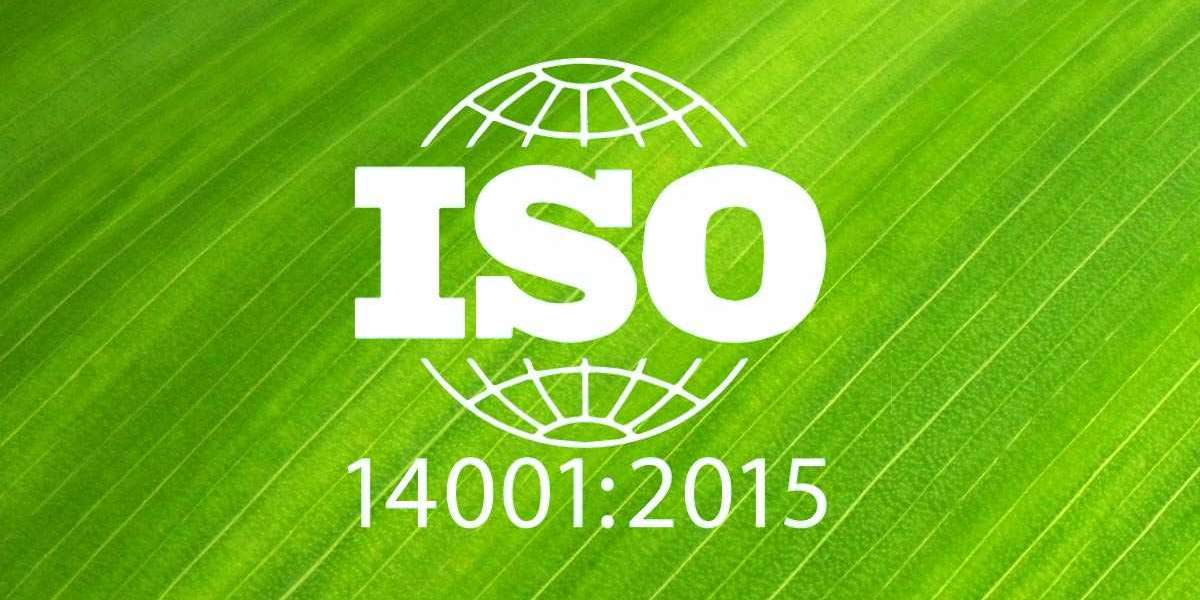In today’s world, environmental responsibility has become a crucial aspect of business operations. As organizations face increasing pressure to demonstrate sustainable practices, the ISO 14001 certification has emerged as a widely recognized and respected standard for environmental management systems (EMS). This certification helps companies effectively manage their environmental responsibilities in a structured and systematic manner, contributing to sustainable development and environmental protection.
Obtaining ISO 14001 certification signifies that an organization has implemented an Environmental Management System that meets the requirements of the ISO 14001 standard. By doing so, organizations can demonstrate their commitment to minimizing environmental impact, complying with regulations, and continually improving their environmental performance. Many organizations also offer ISO 14001 2015 training, which is designed to help companies and professionals understand the latest version of the standard and effectively implement its requirements.
What Is ISO 14001?
ISO 14001 is part of the ISO 14000 family of standards, developed by the International Organization for Standardization (ISO) to provide a framework for businesses to manage their environmental responsibilities. Specifically, ISO 14001 focuses on establishing, implementing, maintaining, and improving an EMS. This framework enables organizations to control their environmental impact and enhance environmental performance.
Organizations of all sizes and sectors can benefit from adopting the ISO 14001 framework. The certification is not limited to any specific industry, making it a versatile tool for any company looking to improve its environmental footprint. The framework emphasizes continual improvement, meaning that organizations are encouraged to constantly assess and upgrade their practices to ensure alignment with evolving environmental standards and regulations.
Key Components of ISO 14001
The ISO 14001 framework is built around several core components, which together form a comprehensive approach to environmental management. These include:
- Environmental Policy: The organization must define its commitment to environmental management in a formal policy statement, outlining its environmental objectives and approach.
- Planning: The organization identifies environmental aspects and impacts, sets objectives, and develops plans to mitigate or improve these impacts.
- Implementation: The organization implements the environmental management system, allocating resources, roles, and responsibilities for achieving environmental goals.
- Monitoring and Measurement: Regular monitoring and measurement of environmental performance is essential to ensure objectives are being met.
- Continual Improvement: The EMS is designed to evolve over time, with the organization reviewing its performance and taking corrective actions to achieve ongoing improvement.
Benefits of ISO 14001 Certification
Achieving ISO 14001 certification offers several significant benefits for organizations committed to improving their environmental performance. These benefits are both direct and indirect, impacting the organization internally as well as enhancing its external reputation.
1. Compliance with Environmental Regulations
One of the primary advantages of ISO 14001 certification is ensuring compliance with national and international environmental regulations. By implementing an ISO 14001-compliant EMS, organizations are better equipped to identify relevant environmental laws and regulations, and ensure they meet or exceed them. This helps reduce the risk of non-compliance, which can result in costly fines, legal action, or damage to reputation.
2. Improved Environmental Performance
The structured approach of ISO 14001 encourages organizations to adopt sustainable practices that minimize their environmental impact. From reducing waste and energy consumption to managing water resources more efficiently, ISO 14001 enables organizations to monitor and improve their environmental performance over time.
3. Increased Efficiency and Cost Savings
Implementing an ISO 14001 EMS often leads to operational efficiencies that can result in cost savings. For example, better management of resources like energy and raw materials can lower operational costs. Furthermore, companies that successfully manage waste reduction and resource optimization can often reduce costs associated with waste disposal and raw material procurement.
4. Enhanced Corporate Reputation and Marketability
In an increasingly environmentally conscious marketplace, businesses that demonstrate their commitment to sustainability can enhance their reputation with consumers, investors, and stakeholders. ISO 14001 certification acts as a symbol of environmental responsibility, helping organizations differentiate themselves from competitors. Additionally, many clients and government contracts now require ISO 14001 certification as a prerequisite for business partnerships.
5. Employee Engagement and Morale
Organizations that invest in sustainability and environmental management often experience higher levels of employee engagement and morale. Workers take pride in being part of a company that is committed to protecting the environment, which can lead to increased productivity and job satisfaction.
The ISO 14001 2015 Revision: Key Changes
The ISO 14001 standard was revised in 2015 to align with modern environmental challenges and integrate new management system standards. Organizations seeking ISO 14001 certification today must adhere to the requirements of the updated ISO 14001:2015 version. To help organizations and individuals familiarize themselves with these changes, ISO 14001 2015 training has become essential.
1. High-Level Structure (Annex SL)
One of the significant updates in the 2015 revision is the introduction of the Annex SL structure, which provides a common framework for all ISO management system standards. This high-level structure makes it easier for organizations to integrate ISO 14001 with other management system standards, such as ISO 9001 for quality management or ISO 45001 for occupational health and safety.
2. Greater Emphasis on Leadership and Commitment
ISO 14001:2015 places a stronger emphasis on leadership involvement and commitment to environmental management. Top management is now required to take a more active role in the implementation and effectiveness of the EMS, ensuring that environmental management is integrated into the organization’s overall strategic direction.
3. Risk-Based Thinking
The 2015 revision introduces a greater focus on risk-based thinking, requiring organizations to identify potential risks and opportunities related to their environmental aspects. This proactive approach helps organizations to mitigate risks before they become issues and seize opportunities that may arise from improved environmental practices.
4. Life-Cycle Perspective
ISO 14001:2015 also introduces the concept of a life-cycle perspective, which encourages organizations to consider the environmental impacts of their products and services throughout their entire life cycle, from raw material extraction to disposal. This ensures a more holistic approach to environmental management.
5. Improved Communication and Documentation Requirements
The revised standard emphasizes the importance of internal and external communication about environmental management practices. Additionally, while the previous version of the standard required extensive documentation, the 2015 revision allows for more flexibility in how documentation is maintained, focusing on the need for evidence rather than specific formats.
Importance of ISO 14001 2015 Training
To fully understand and implement the changes introduced in the 2015 revision, many organizations invest in ISO 14001 2015 training for their teams. Such training ensures that employees and management understand the new requirements and are equipped to incorporate them into the organization’s EMS. By undergoing ISO 14001 2015 training, organizations can ensure that they are fully compliant with the latest standards and can leverage the benefits of the new framework.
Training typically covers:
- The key changes in the ISO 14001:2015 standard
- How to align existing environmental management practices with the new requirements
- The role of leadership in EMS
- Risk management and life-cycle thinking
- Strategies for continual improvement and compliance
This training is essential for companies seeking to upgrade their ISO 14001 certification to the 2015 version and for professionals involved in the development and maintenance of an EMS.
Steps to Achieve ISO 14001 Certification
Achieving ISO 14001 certification involves a structured approach that starts with understanding the standard’s requirements and culminates in a third-party audit. The process generally involves the following steps:
1. Gap Analysis
Before beginning the certification process, organizations should conduct a gap analysis to compare their current environmental management practices against the ISO 14001 requirements. This helps identify areas that need improvement or adjustment to meet the standard.
2. Developing the EMS
Next, the organization must design and implement an EMS that complies with ISO 14001. This includes defining environmental policies, setting objectives, and assigning roles and responsibilities for environmental management.
3. Internal Audit and Review
Once the EMS is in place, the organization should conduct an internal audit to assess its effectiveness and identify any non-conformities. A management review should follow to ensure that the EMS aligns with the organization’s overall goals and objectives.
4. Certification Audit
The final step in achieving ISO 14001 certification is the third-party audit conducted by an accredited certification body. The auditor will assess the EMS and its implementation to ensure it meets the ISO 14001 2015 training requirements. If successful, the organization will be awarded the certification.
Conclusion
The ISO 14001 environmental management framework offers organizations a structured, effective way to manage their environmental responsibilities. By obtaining ISO 14001 certification, companies can ensure compliance with environmental regulations, improve performance, and enhance their reputation in the marketplace. With the introduction of the ISO 14001:2015 revision, the standard has become even more comprehensive, addressing modern environmental challenges and emphasizing leadership, risk management, and life-cycle thinking.







